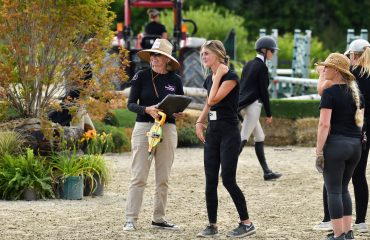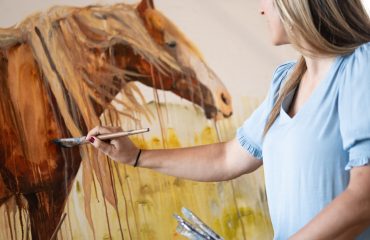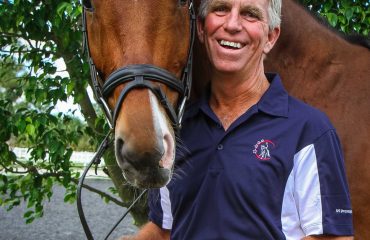By George Williams
They may be small, but they are mighty in Europe. In many ways, their mightiness shines through in terms of the education they can provide to young dressage athletes. They, of course, are the FEI Ponies.
I don’t know if I’ve ever watched a class where rider after rider nailed the walk half-pirouettes like they did in the CDIP Freestyle class at the Future Champions competition in Hagen, Germany. In my humble opinion, walk half-pirouettes are not only one of the hardest movements to ride, they appear to be equally hard to judge and I say that from my experience as a rider and coach. That being said, they are one of the most fundamental, effective and foundation training exercises we have. A correctly ridden one narrows the base behind building strength, both in terms of carrying and pushing power. This along with the other demands of the movement creates a lift and freedom in the horse’s shoulders.
The key words here are “correctly ridden.” The Directive Ideas in the FEI Pony Riders Team Test state: “Regularity, activity, collection, size, flexion, and bend of half pirouette. Forward tendency, maintenance of four beat.”
That’s a lot of things packaged into one movement! It underscores how important this one exercise is to the development of a dressage horse and a dressage rider. As I said before, what impressed me is that I’ve never watched a class where I have seen so many good walk half-pirouettes one right after another. It becomes even more impressive when you consider that all the riders in the class were between 12 and 16 years old and they were all on ponies!
In Europe, FEI Dressage Ponies are a big deal. Unfortunately, not so much so in the U.S. I say unfortunately because the riders of these ponies are getting an incredible education. Technically, of course, they are ponies, but in reality they seem more like little horses, which is important, too. It’s crucial, if our younger riders are going to learn and develop into accomplished riders, that they learn how a horse should move through its back, and that requires good, quality gaits. Or at least it’s much easier when a horse has a longer stride, a naturally active hind leg and a good motor behind.
The FEI Pony Tests are designed to introduce the fundamental principles and tools necessary to develop through the levels and to be able to reach the top of the sport. The tests are demanding with simple changes, counter canter, lateral work and walk half-pirouettes. There is collection asked for in all three gaits, helping riders learn the role of collection in properly developing extended gaits. What became very obvious as I watched the freestyle class at Hagen was that in order to increase the degree of difficulty, the competitors were doing numerous canter-walk-canter transitions, both true canter to true canter and counter canter to counter canter. In order to score well, these transitions had to be spot on. What better way is there to develop the feel for collecting a horse than a good downward transition where the horse must shift their weight back, improve their longitudinal balance by carrying more weight behind and at the same stay actively forward into the new gait?
When you follow a methodical progression, such as seen in the FEI Pony Rider division, quality ponies that are size appropriate for their riders become great teachers. It would be wonderful to see the FEI Pony Rider division grow here as it has in Europe. It would literally give us a leg up.
Photo:
Dressage ponies are small but mighty.
Photo by Adrienne Morella, www.adriennemorellaphotography.com













